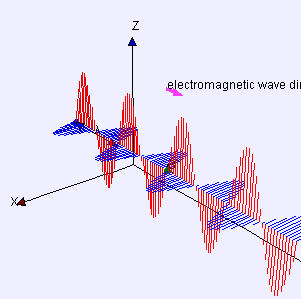Except for one or two (well, three actually) niggling little problems that were hardly worth mentioning, everything was now wrapped up neatly and tied with a bow. Oh, alright. I'll go ahead and mention them anyway.
Maxwell's equations, as you will recall, predicted the existence of electromagnetic waves that would propagate at the ludicrous speed of 186,000 miles per second. But propagate in what exactly? Didn't moving waves need something in which to move? And that speed - just exactly what object or reference frame is that speed relative to?
| Max Planck in 1878. His physics teacher advised against a career in science, saying, "Everything has already been discovered." |
He also happened to be a gifted mathematician, and when he applied himself to the current understanding in 1894 of electromagnetic radiation, he found that a hot glowing filament was predicted to emit an infinite amount of very short-wavelength radiation, which clearly and demonstrably was NOT the case at all. After talking to other scientists about the problem, he realized that one way for his equations to match the experimental results was to assume that electromagnetic energy could only be emitted in very small, discrete lumps that he called "Energy Units." Everyone else said, "That's a stupid name," and started calling them Quanta.
The trick worked, though Max Planck implored other scientists to please not take this purely fictional assumption about "quanta" too seriously. But to his dismay, along came this high-school dropout and obscure patent clerk with no discernible musical ability who proved, using an experiment called the Photoelectric Effect, that indeed light energy was found only in discrete quanta known as Photons. And thus the entire field of Quantum Physics was born and Max Planck and Albert Einstein were both given Nobel Prizes in Physics.
This made them very, very upset, as you can well imagine. They spent the rest of their lives trying to prove that Quantum Physics was not correct. That "it was just this thing, you know? It's all that scoundrel Maxwell's fault." But to no avail. As empirical evidence mounted, more and more physicists had to concede that it was not just the only theory that explained and predicted the fantastic new discoveries being made all the time, it was also by miles the most accurate theory ever for calculating expected experimental results.
And it all happened as an inevitable outgrowth of the physics that was basically known as early as 1831. Planck or Schrödinger or Heisenberg didn't wake up one morning and decide to start a whole new paradigm in physics. No! This was thrust upon them simply for trying to understand the physics that they already had - the sensible physics discovered in sensible laboratories by sensible people like Ampere and Faraday.
Back to Maxwell's equations, there were two other unresolved issues: what were these waves "waving" in, and what is the speed of light relative to. The equations were completely silent on both these issues, and for good reason. The answer to the first turned out to be "Nothing," and the answer to the second, "Everything." Nobody was prepared to hear either of those answers, but the empirical evidence was rock-solid and mounting. Electric and magnetic fields are capable of propagating themselves with no help from anything, real or imagined.
As the earth turns on its axis daily and swings around the sun yearly, and as the sun revolves around the galactic center every 200 million years and as the galaxy whizzes through empty intergalactic space towards Andromeda, how fast are we actually moving at any given moment? If you're sitting down, you're not moving at all, relative to the chair. And it turns out, relative is all there ever is.
The problem is that Maxwell's equations say the speed of light will always be 186,000 miles per second, relative to everything, all the time. How can that be? If we move towards a source of light, shouldn't its light be moving towards us at a speed faster than 186,000 miles per second? You'd think so, but it just doesn't!
Albert Michelson and Edward Morley tested that claim with their light-speedometer (an interferometer). They found absolutely no change in the speed of light, no matter the time of day, day of year, direction of the experiment, or anything else. Zero. Nada. Nichevo. Nichts. Zilch. It just never changes, ever. Maxwell's Equations don't care about the relative speed of the source or the observer. They simply say that the speed of light is always the speed of light, period.
Of course nobody believed that for a moment. No one except Albert Einstein, anyway. He applied himself to the mathematics and eventually in 1905 found that if Maxwell's equations were true, then there were a number of other things that must also be true. The passage of time must depend on how fast something is moving. The apparent length of objects must depend on their speed as well. By 1915 he had worked out, ONLY as a result of Maxwell's Equations' refusal to place a reference frame around the speed of light, the following astonishing predictions:
- Space curves in the presence of mass.
- Light bends in the presence of mass.
- "Black Holes" could exist.
- Time slows for objects near mass or moving very fast.
- Gravitational Waves must exist and have certain properties, but are possibly too weak to ever be detected.
As empirical evidence supporting each of these claims piled up and as attempts to rule out Einstein's "Relativity Theory" failed again and again, scientists had to accept that maybe, just maybe, Maxwell's equations were right, after all.
___
And that is more or less the story of how all of Modern Physics consisting of Quantum Mechanics and Relativity got started by one guy and his four harmless-looking equations.

 .
. .
.



